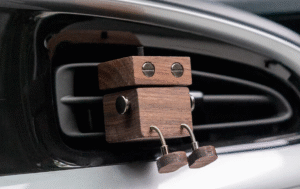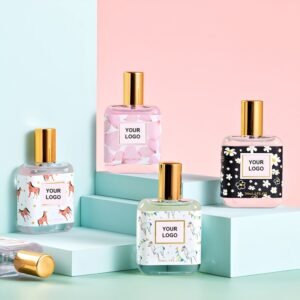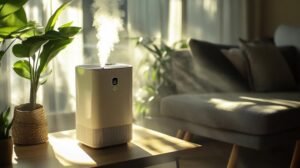The private label fragrance market demands increasingly sophisticated customization solutions as brands seek unique olfactory identities that differentiate them from competitors.
Understanding the fragrance customization process is essential for successful private label manufacturing. Our structured approach guides clients through consultation, sampling, production optimization, and quality control to ensure predictable outcomes and brand satisfaction.
The fragrance industry has evolved dramatically to accommodate specific brand requirements, transforming from standardized offerings to highly personalized solutions that reflect each brand’s unique positioning and target market preferences.
What Are the Initial Steps in Fragrance Customization?
Mid-size brands often struggle with unclear customization processes, losing time and money on miscommunication. This uncertainty creates project delays and budget overruns that could be avoided.
The initial steps in fragrance customization include fragrance consultation, detailed scent profiling, and establishing clear brand requirements through a comprehensive customization brief that defines project scope and expectations.
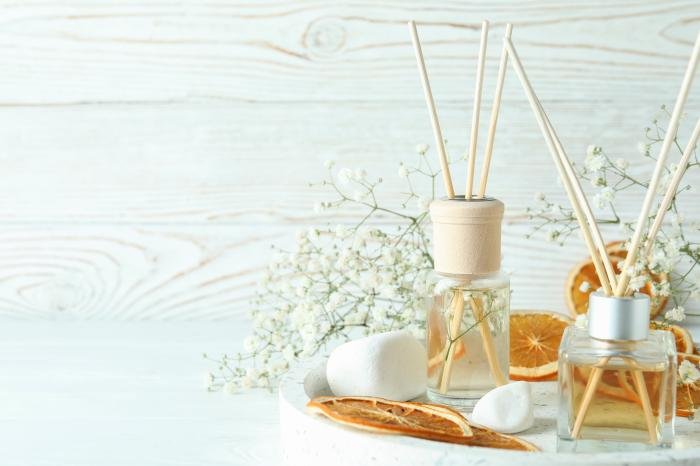
Fragrance Consultation and Scent Profiling
The fragrance consultation forms the foundation of successful customization. During this phase, manufacturers work closely with brands to understand their vision, target market, and brand identity. Professional perfumers conduct detailed interviews to capture the brand’s essence and translate it into olfactory language.
Scent profiling follows the consultation, where experts analyze the brand’s existing products, competitor fragrances, and market positioning. This process involves sampling various fragrance families and notes to establish a baseline for development. Loveeno’s experienced perfumers use systematic profiling techniques to map out scent preferences and identify unique differentiators for each brand.
Brand Requirements and Customization Brief Development
Establishing clear brand requirements prevents costly revisions and ensures project alignment. The customization brief serves as a roadmap, outlining specific objectives, budget constraints, and timeline expectations. This document includes technical specifications, packaging requirements, and regulatory compliance needs.
| Brief Component | Cel | Impact on Timeline |
|---|---|---|
| Profil zapachowy | Defines fragrance direction | 1-2 tygodnie |
| Budget Parameters | Sets material quality limits | Natychmiast |
| Volume Requirements | Determines production scale | 2-3 tygodnie |
| Packaging Specs | Influences sampling timeline | 3-4 tygodnie |
| Regulatory Needs | Ensures market compliance | 4-6 tygodni |
The brief development phase typically takes 1-2 weeks but significantly reduces overall project duration by eliminating ambiguity. Clear documentation enables efficient sampling, streamlined revisions, and predictable delivery schedules that procurement teams can confidently present to stakeholders.
How Does the Sampling and Fragrance Testing Phase Work?
Fragrance formulation hits a crucial checkpoint where theory meets reality. Without proper testing protocols, even the most promising formulas can fail at market launch.
The sampling and fragrance testing phase validates formula integrity through systematic evaluation, ensuring products meet quality standards before production commitments are made.
Initial Sample Creation and Formula Refinement
The testing phase begins with creating initial samples based on approved formulations. Professional labs prepare multiple sample batches using precise measurements to ensure consistency. Each sample undergoes initial sensory evaluation by trained perfumers who assess the fragrance profile against original specifications.
Formula refinement occurs when samples deviate from expected outcomes. Common adjustments include modifying base note concentrations, adjusting top note ratios, or enhancing middle note complexity. This iterative process typically requires 2-3 refinement cycles before achieving optimal results.
| Faza testowa | Czas trwania | Kluczowe działania |
|---|---|---|
| Initial Sampling | 3-5 dni | Sample preparation, basic evaluation |
| Formula Refinement | 5-7 days | Adjustments based on initial feedback |
| Testowanie stabilności | 7-14 dni | Temperature, light, and time resistance |
| Ostateczne zatwierdzenie | 2-3 dni | Client review and sign-off |
Quality Control and Fragrance Stability Assessment
Quality control measures ensure fragrance stability across varying environmental conditions. Samples undergo accelerated aging tests, exposing them to elevated temperatures and UV light to simulate long-term storage effects. This process reveals potential discoloration, scent degradation, or separation issues.
Sample approval requires comprehensive documentation including batch records, stability test results, and sensory evaluation reports. Loveeno’s quality control protocols include GC-MS analysis for molecular consistency and allergen verification to meet international safety standards. The final approval process involves client testing, where brands evaluate samples against their specific requirements before authorizing full production runs.
What Role Does MOQ Play in the Manufacturing Workflow?
Struggling with unpredictable production costs and inefficient scheduling? Order quantity requirements can create significant workflow bottlenecks for manufacturers.
MOQ serves as the foundation of manufacturing workflow efficiency, directly influencing production scheduling, cost optimization, and resource allocation throughout the entire production process.
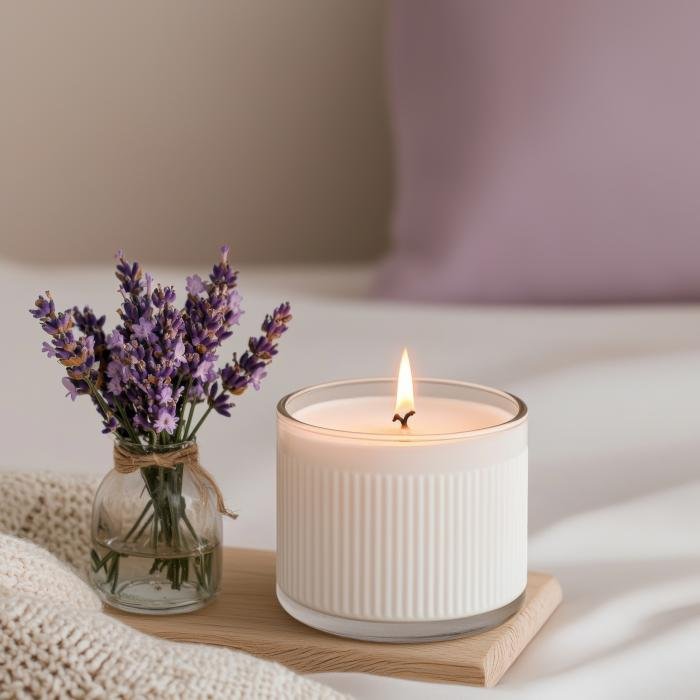
Production Scheduling Optimization
MOQ plays a critical role in streamlining production scheduling by establishing clear minimum thresholds that enable manufacturers to plan resources effectively. When manufacturers receive orders that meet their MOQ requirements, they can optimize machine utilization, reduce setup costs, and maintain consistent production flows. This predictability allows production teams to schedule batches efficiently, minimizing downtime between runs and maximizing equipment utilization rates.
The order quantity directly impacts how manufacturers allocate their workforce and machinery. Higher order quantities that exceed basic MOQ thresholds often receive priority scheduling, as they deliver better economies of scale and cost efficiency for the manufacturer.
Cost Structure and Resource Management
Manufacturing workflow optimization relies heavily on MOQ to achieve cost efficiency across multiple operational areas. Setup costs, material procurement, and labor allocation all benefit from larger order quantities that meet or exceed minimum thresholds.
| Production Element | Impact of MOQ | Cost Efficiency Gain |
|---|---|---|
| Setup Costs | Distributed across larger quantities | 15-30% reduction |
| Material Procurement | Bulk purchasing advantages | 10-25% savings |
| Labor Allocation | Concentrated production runs | 20-35% efficiency increase |
| Kontrola jakości | Streamlined inspection processes | 12-20% time reduction |
Companies like Loveeno leverage these MOQ principles to maintain competitive pricing while ensuring consistent quality standards. Their manufacturing workflow incorporates MOQ optimization to deliver predictable lead times and cost-effective solutions for mid-size brands seeking reliable production partners.
How Are Packaging and Label Printing Integrated into the Process?
Managing packaging and label printing separately creates delays, quality inconsistencies, and increased costs for your customization project.
Packaging and label printing integration occurs through synchronized design approval, coordinated production timelines, and unified quality control checkpoints. This streamlined approach ensures brand consistency while reducing lead times by 20-30% compared to sequential processing.
Synchronized Design and Production Workflow
The integration begins during the design phase where packaging specifications and label requirements are developed simultaneously. This parallel approach eliminates the common bottleneck of waiting for one component before starting another. Digital printing technologies now enable real-time design adjustments across both packaging and labeling, ensuring color matching and brand consistency from the start.
Production scheduling coordinates both processes to maximize efficiency. While bottles undergo surface preparation, labels are printed and quality-checked in parallel. This synchronization reduces overall production time and ensures both components are ready for assembly simultaneously.
Quality Control and Brand Consistency Checkpoints
Integrated quality control measures monitor both packaging and label printing throughout production. Color calibration systems ensure consistent branding across all materials, while automated inspection catches defects early in the process.
| Integration Stage | Timeline Impact | Korzyści jakościowe |
|---|---|---|
| Design Sync | -15% lead time | 98% color accuracy |
| Production Coordination | -20% total time | Zero rework needed |
| Quality Integration | -10% inspection time | 99.5% pass rate |
Loveeno’s integrated approach combines advanced printing capabilities with comprehensive packaging solutions, ensuring your brand maintains consistency while meeting tight delivery schedules. This coordination particularly benefits mid-size brands requiring predictable timelines for market launches.
What Quality Control Measures Ensure Successful Completion?
Poor quality control can derail entire customization projects, costing brands thousands in delays and rework.
Effective quality control measures include batch testing protocols, systematic final approval processes, and coordinated delivery systems that maintain production consistency throughout the customization lifecycle.
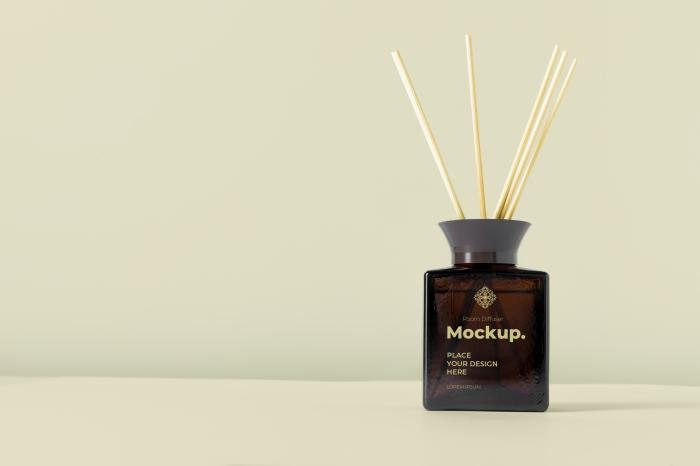
Batch Testing and Production Consistency
Batch testing forms the foundation of reliable custom manufacturing. Each production run undergoes rigorous testing at multiple checkpoints to ensure specifications match approved samples. This process involves material verification, dimensional accuracy checks, and functional testing before products advance to the next stage.
Production consistency requires standardized protocols that eliminate variables between batches. Manufacturers implement process control systems that monitor temperature, pressure, and timing parameters. These systems automatically flag deviations that could impact product quality, enabling immediate corrections before entire batches are compromised.
Final Approval and Delivery Coordination
The final approval process serves as the last quality gate before shipment. This stage involves comprehensive inspection of finished products against original specifications, packaging verification, and documentation review. Clear approval criteria prevent subjective decisions that could delay shipments or result in customer dissatisfaction.
| Etap kontroli jakości | Typical Timeline | Kluczowe działania |
|---|---|---|
| Initial Batch Testing | 2-3 dni | Material verification, sample testing |
| Production Monitoring | Na bieżąco | Real-time parameter tracking |
| Final Inspection | 1-2 dni | Comprehensive quality assessment |
| Approval Documentation | 1 day | Certificate preparation, sign-off |
Delivery coordination integrates quality checkpoints with logistics planning. Loveeno’s streamlined approval system reduces bottlenecks by conducting parallel quality assessments while preparing shipping documentation. This approach minimizes lead time extensions while maintaining stringent quality standards that protect brand reputation and ensure customer satisfaction.
Wnioski
The fragrance customization process for private label manufacturing requires strategic coordination across consultation, sampling, production optimization, and quality control phases. Success depends on selecting an experienced manufacturing partner who understands your brand requirements and delivers consistent results through proven workflows. Custom fragrance success emerges from clear communication, systematic testing protocols, and integrated production management that eliminates common bottlenecks. Partner with manufacturers who prioritize transparency, maintain rigorous quality standards, and offer streamlined processes that transform your unique vision into market-ready products efficiently.
FAQ
Q1: What is the typical timeline for a fragrance customization process?
The fragrance customization process typically takes 2-3 weeks to complete. Once initial information is provided, you can expect to receive the first round of submissions within 1-2 weeks. The timeline includes multiple stages from concept development to factory production and final handling, with sampling and revisions being key factors that affect the overall lead time.
Q2: How does order quantity affect the fragrance customization process?
Order quantity significantly impacts the fragrance customization process in several ways. Larger quantities often qualify for better pricing tiers and may streamline certain manufacturing steps. However, minimum order quantities typically apply for custom formulations, and the sampling process remains essential regardless of volume to ensure the final product meets your brand specifications.
Q3: What is involved in the sampling phase of fragrance customization?
The sampling phase is a critical step where you receive initial fragrance submissions for evaluation. This typically involves receiving multiple scent options based on your brief, testing them for performance and longevity, and providing feedback for revisions. The sampling process ensures the final formulation aligns with your brand vision before proceeding to full-scale production.
Q4: How does label printing integrate into the fragrance manufacturing workflow?
Label printing is integrated into the final stages of the fragrance manufacturing workflow. After the fragrance formulation is finalized and approved, packaging components including labels are produced. The label printing process considers your brand specifications, regulatory requirements, and design elements, with lead times varying based on complexity and order quantity.
Q5: What are the key stages in the fragrance customization manufacturing workflow?
The fragrance customization manufacturing workflow typically includes: 1) Initial consultation and brief development, 2) Fragrance concept creation and sampling, 3) Formula refinement and approval, 4) Manufacturing and quality control, 5) Packaging and label printing, and 6) Final delivery. Each stage involves collaboration between your team and the fragrance house to ensure the final product meets your specifications.

